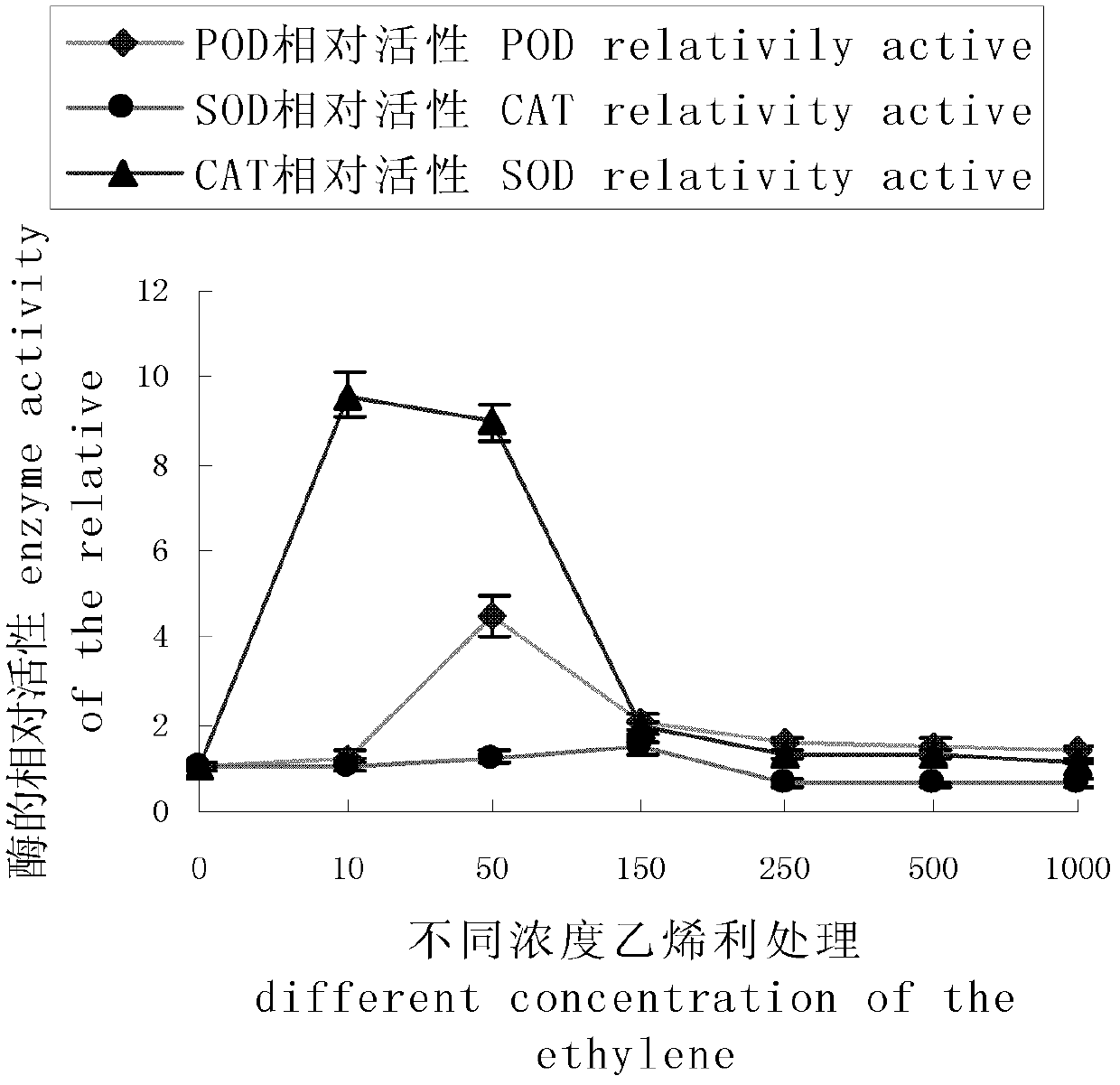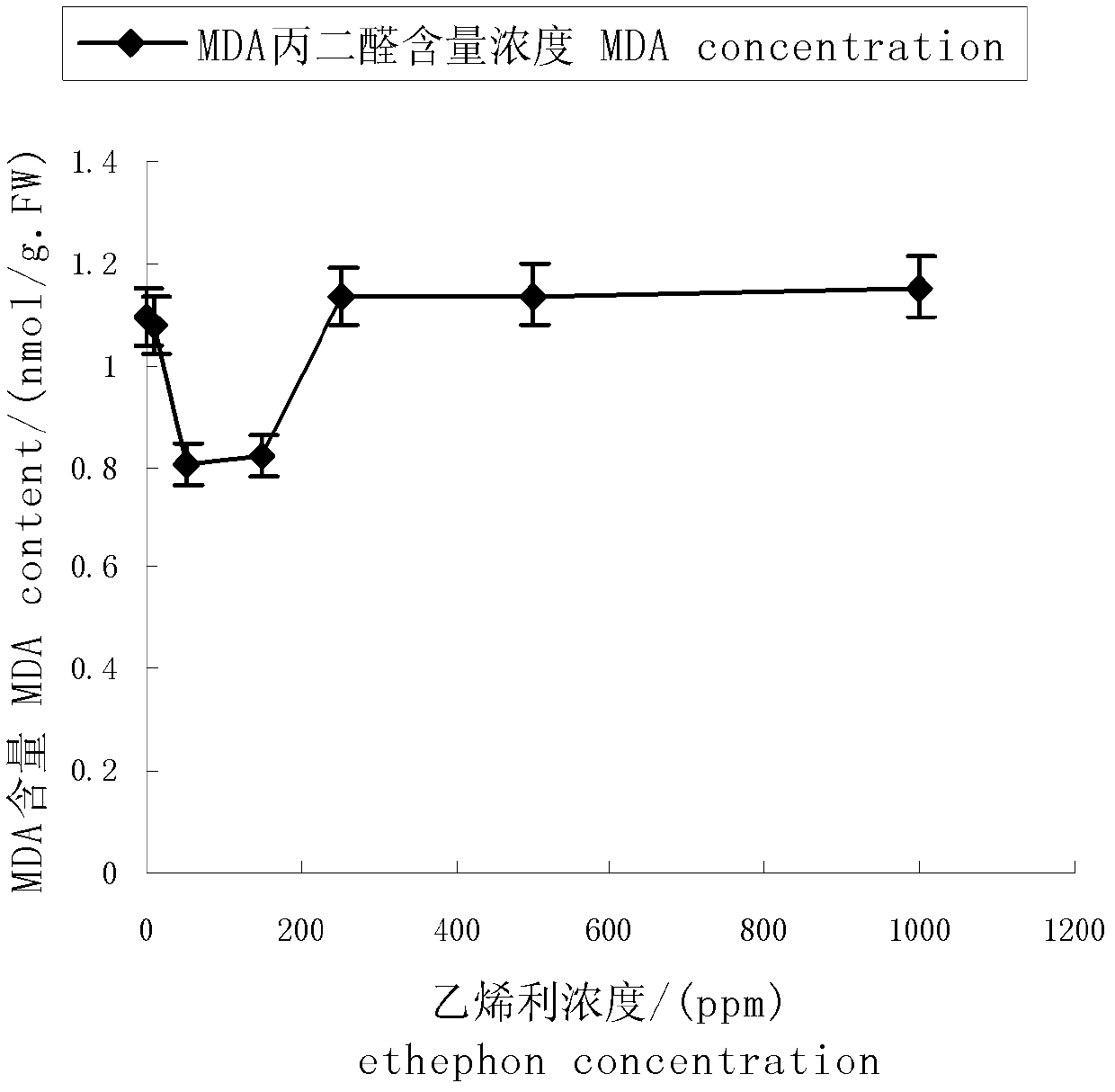Method for analyzing differential expression of cotyledon senescence-associated gene of brown cotton by use of cDNA-SRAP (complementary deoxyribonucleic acid-sequence-related amplified polymorphism) technique
A technology of technical analysis and genetic difference, applied in the fields of biochemical equipment and methods, microbial determination/inspection, etc., to achieve the effect of low cost, high efficiency and deepening of understanding
- Summary
- Abstract
- Description
- Claims
- Application Information
AI Technical Summary
Problems solved by technology
Method used
Image
Examples
Embodiment 1
[0036] Embodiment 1 ethephon induces brown cotton cotyledon senescence
[0037] 1 material
[0038] Using the brown cotton "Brilliant Choice No. 1" that had germinated for 20 days as the material, the leaves were sprayed with ethephon at a concentration of 0, 10, 50, 150, 250, 500, and 1000 ppm, and the cotyledons were taken after 24 hours of treatment. Take 6 plants and repeat three times. Store in a -70°C refrigerator after taking pictures.
[0039] 2 methods
[0040] For enzyme extraction and activity determination, refer to "Principles and Techniques of Plant Physiological and Biochemical Experiments" edited by Wang Xuekui (2006). The POD activity was measured by the guaiacol method, the SOD activity was measured by the nitro blue tetrazolium (NBT) method, and the CAT activity was measured by ultraviolet spectrophotometry. The specific measurement method is as follows:
[0041] Determination of peroxidase (POD) activity
[0042] Determination of peroxidase activity b...
Embodiment 2
[0070] Example 2 Ethephon Treatment Effects on Gene Expression
[0071] Step 1, first use concentrated sulfuric acid with a mass fraction of 98% to delint and disinfect the brown cottonseed of "Zongcaixuan No. 1", and plant it at 10cm 3 In the plastic culture pot, the cultivation was carried out in the light incubator, and the light intensity was 45μmol*m -2 *s -1 , photoperiod (16 / 8h), and then cultivated in a light incubator at 27°C ± 2°C at a constant temperature. The brown cotton "Wonderful Choice No. 1" that germinated for 20-25 days was used as the material, and the leaves were sprayed with ethephon at a concentration of 500ppm. After 18-24 hours of treatment, the cotyledons were taken, treated with liquid nitrogen, and stored in a -70°C refrigerator for later use;
[0072] Step 2, extracting total RNA from cotton cotyledons. The extraction of total RNA adopts the improved CTAB method, and the extracted total RNA is detected by ultraviolet spectrophotometer, and the c...
PUM
 Login to View More
Login to View More Abstract
Description
Claims
Application Information
 Login to View More
Login to View More - R&D Engineer
- R&D Manager
- IP Professional
- Industry Leading Data Capabilities
- Powerful AI technology
- Patent DNA Extraction
Browse by: Latest US Patents, China's latest patents, Technical Efficacy Thesaurus, Application Domain, Technology Topic, Popular Technical Reports.
© 2024 PatSnap. All rights reserved.Legal|Privacy policy|Modern Slavery Act Transparency Statement|Sitemap|About US| Contact US: help@patsnap.com










